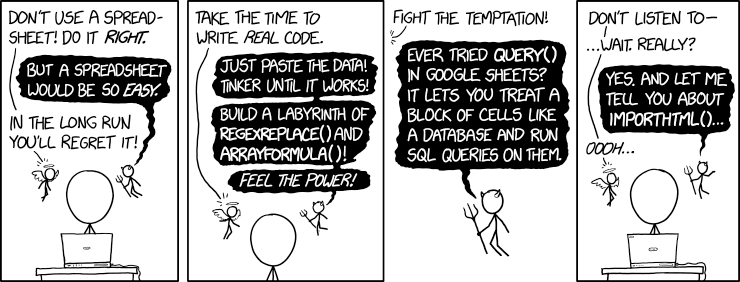I had a laugh at the xkcd comic from a few days ago:

It made me think of my standard routine when I’m walking through a business operations area and want to pinpoint where the existing systems aren’t doing what the workers really need them to do: I look for the spreadsheets and email. These are the best indicator of shadow IT at work, where someone in the business area creates an application that is not sanctioned or supported by IT, usually because IT is too busy to "do it right". Instead of accessing data from a validated source, it’s being copied to a spreadsheet, where scripts are performing calculations using business logic that was probably valid at that point that it was written but hasn’t been updated since that person left the company. Multiple copies of the spreadsheet (or a link to an unprotected copy on a shared drive) are forwarded to people via email, but there’s no way to track who has it or what they’ve done with it. If the data in the source system changes, the spreadsheet and all of its copies stay the same unless manually updated.
Don’t get me wrong: I love spreadsheets. I once claimed that you could take away every other tool on my desktop and I could just reproduce it in Excel. Spreadsheets and email fill the gaps between brittle legacy systems, but they aren’t a great solution. That’s where low-code platforms fit really well: they let semi-technical business analysts (or semi-business technical analysts) create applications that can access realtime business data, assign and track tasks, and integrate other capabilities such as decision management and analytics.
I gave a keynote at bpmNEXT this year about creating your own digital automation platform using a BPMS and other technology components, which is what many large enterprises are doing. However, there are many other companies — and even departments within those large companies — for which a low-code platform fills an important gap. I’ll be doing a modified version of that presentation at this year’s CamundaCon in Berlin, and I’m putting together a bit of a chart on how to decide when to build your own platform and when to use a monolithic low-code platform for building business applications. Just don’t use spreadsheets and email.
